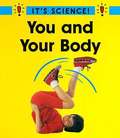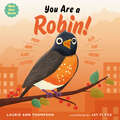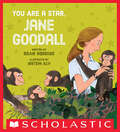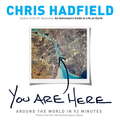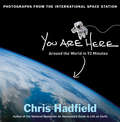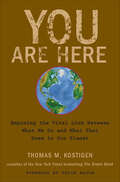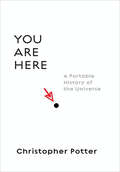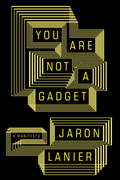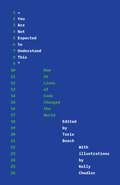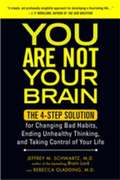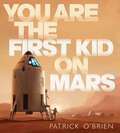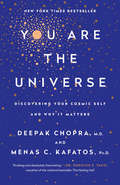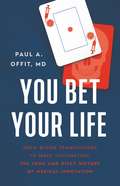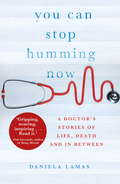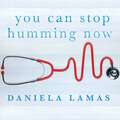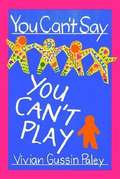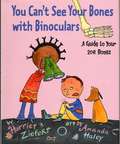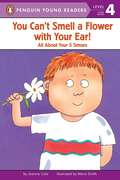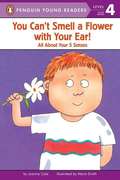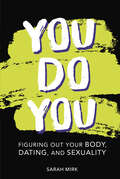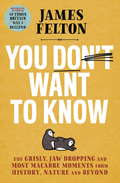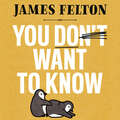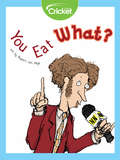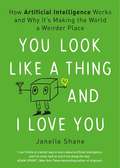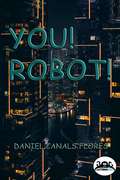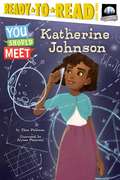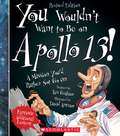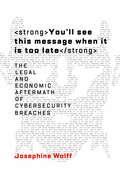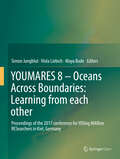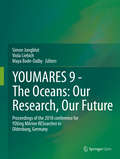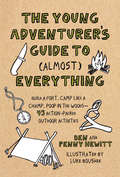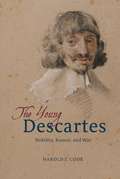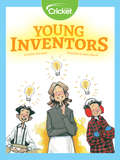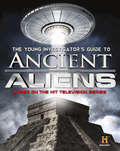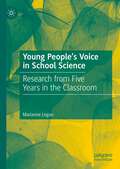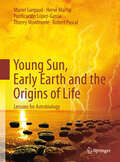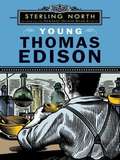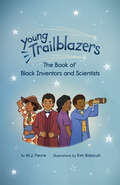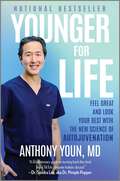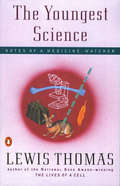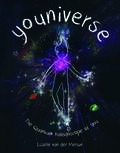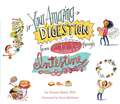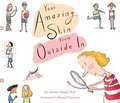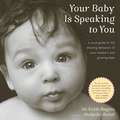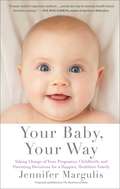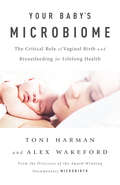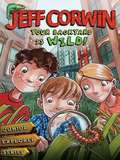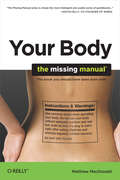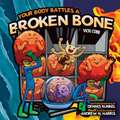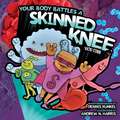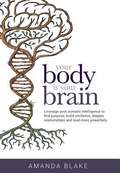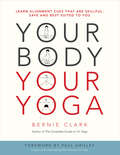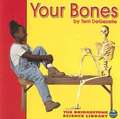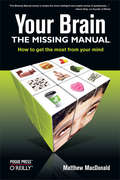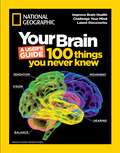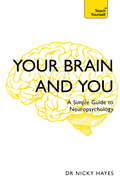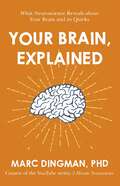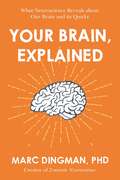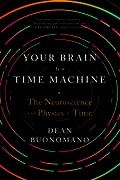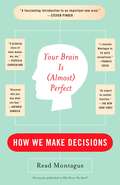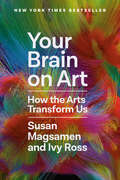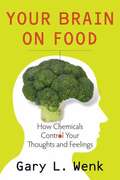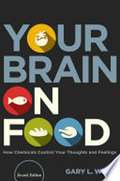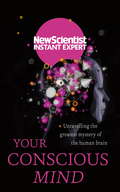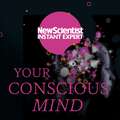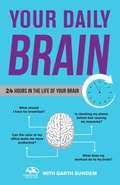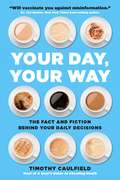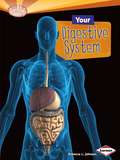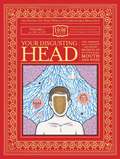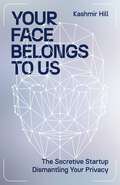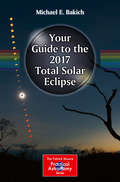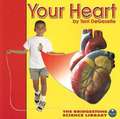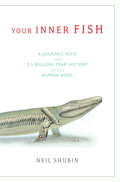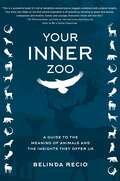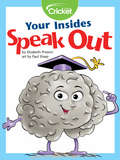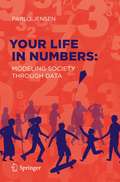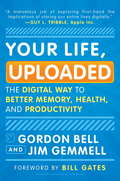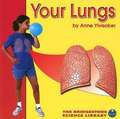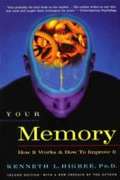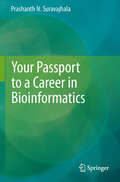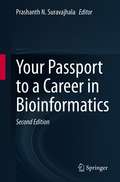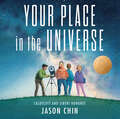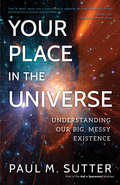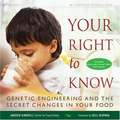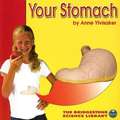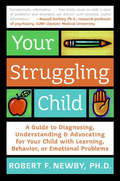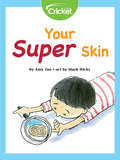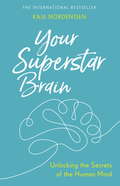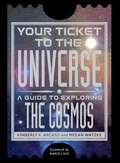- Table View
- List View
The Yokohama System for Reporting Endometrial Cytology: Definitions, Criteria, and Explanatory Notes
by Yasuo Hirai Franco FulcinitiThis book describes a standardized method for classifying and reporting invasive endometrial malignancies via direct endometrial sampling. Featuring a wealth of color illustrations, it provides specific diagnostic categories and cytomorphologic criteria to promote uniform and reliable diagnoses. It also describes the history of directly sampled endometrial cytology, reviews the sampling techniques and algorithmic approach, discusses specimen adequacy, and outlines challenges for the future. The Yokohama System for Reporting Endometrial Cytology – Definitions, Criteria and Explanatory Notes offers a valuable resource for researchers at clinical cytopathological laboratories around the world whose work involves gynecological cytology, oncology, pathology, and cytopathology. It will also appeal to researchers in the fields of cytotechnology, basic science, pathology and related industries, medical residents and clinicians.
You and Your Body
by Sally HewittFrom the muscles that move your arms and legs to the medicines you sometimes need to stay healthy, your body is very important to you. And understanding your body is something that science is all about... It's Science! is a series of books that introduces children to the science that surrounds them in their everyday world. A simple friendly text works closely with top-quality photography to open up a new area of learning. Each page is full of things for readers to notice, talk about, and try out for themselves.
You Are a Robin! (Meet Your World)
by Laurie Ann ThompsonThe third in the adorable, STEM nonfiction picture book series that encourages very young readers to learn—through gentle interactivity and play—about the animals who share their worldFlit, flap, flutter! You might have seen a robin flying overhead or heard one singing in the trees. Did you know that robins tidy themselves up, teach their babies to find food, and are almost fully grown in just two weeks? From birth to first flutter and beyond, discover all that goes into being a robin in this charming picture book, the third in the Meet Your World series.This playful and informative series invites you to take a closer look at the amazing animals that live right alongside you in rural, suburban, and urban landscapes across North America. In each book, words and art inspire you to act out animal actions that are not so different from your own habits. And robust backmatter offers even more facts and fun. From the animals&’ families and foods to their environments and behaviors, let&’s meet your world!
You Are a Star, Jane Goodall
by Dean RobbinsMake way for Jane Goodall! It's Jane Goodall like you've never seen her before!Using a unique mix of first-person narrative, hilarious comic panels, and essential facts, Dean Robbins introduces young readers to an scientific trailblazer. The second book in an exciting new nonfiction series, You Are a Star, Jane Goodall focuses on Jane's lifelong mission to understand the chimpanzees, and protect the planet.Hatem Aly's spot-on comic illustrations bring this icon to life, and engaging back matter instructs readers on how to be more like Jane!
You Are Here: Around the World in 92 Minutes
by Chris HadfieldIn You Are Here, astronaut Chris Hadfield creates a surprisingly intimate and compelling visual essay about the planet we live on, choosing the best from the thousands of photos he took on the International Space Station. Chris Hadfield's new book shows us our home--our city, country, continent, our whole planet--from a unique perspective. The millions of us who followed Chris's Twitter feed from the ISS thought we knew what we were looking at when we saw his photos. This photo documentary shows us we didn't. We caught the beauty but missed the meaning. Curated from images never before shared, Chris's big picture reveals why our planet looks the way it does and why we live where we do. Chris sees more in these images than we do, not just because he's spent months in space but because his in-depth knowledge of geology, geography and meteorology allows him to read the mysteries the photos reveal. Divided by continent, You Are Here represents one (idealized) orbit of the ISS. This planetary photo tour--surprising, playful, thought-provoking and visually delightful--is punctuated with fun, fascinating commentary on life in zero gravity, too. In the spirit of his #1 bestselling An Astronaut's Guide to Life on Earth, You Are Here opens a singular window on our planet, using remarkable photographs to illuminate the history and consequences of human settlement, the magnificence (and wit) of never-before-noticed landscapes, and the power of the natural forces shaping our world and the future of our species.
You Are Here: Around the World in 92 Minutes: Photographs from the International Space Station
by Chris HadfieldDivided by continent, YOU ARE HERE represents one (idealized) orbit of the ISS. This planetary photo tour -- surprising, playful, thought-provoking, and visually delightful -- is also punctuated with fun, fascinating commentary on life in zero gravity. In the spirit of his bestselling An Astronaut's Guide to Life on Earth, YOU ARE HERE opens a singular window on our planet, using remarkable photographs to illuminate the history and consequences of human settlement, the magnificence (and wit) of never-before-noticed landscapes, and the power of the natural forces shaping our world and the future of our species.
You Are Here
by Chris HadfieldIn You Are Here, astronaut Chris Hadfield creates a surprisingly intimate and compelling visual essay about the planet we live on, choosing the best from the thousands of photos he took on the International Space Station. Chris Hadfield's new book shows us our home--our city, country, continent, our whole planet--from a unique perspective. The millions of us who followed Chris's Twitter feed from the ISS thought we knew what we were looking at when we saw his photos. This photo documentary shows us we didn't. We caught the beauty but missed the meaning. Curated from images never before shared, Chris's big picture reveals why our planet looks the way it does and why we live where we do. Chris sees more in these images than we do, not just because he's spent months in space but because his in-depth knowledge of geology, geography and meteorology allows him to read the mysteries the photos reveal. Divided by continent, You Are Here represents one (idealized) orbit of the ISS. This planetary photo tour--surprising, playful, thought-provoking and visually delightful--is punctuated with fun, fascinating commentary on life in zero gravity, too. In the spirit of his #1 bestselling An Astronaut's Guide to Life on Earth, You Are Here opens a singular window on our planet, using remarkable photographs to illuminate the history and consequences of human settlement, the magnificence (and wit) of never-before-noticed landscapes, and the power of the natural forces shaping our world and the future of our species.
You Are Here: Exposing the Vital Link Between What We Do and What That Does to Our Planet
by Thomas M. KostigenIn this groundbreaking book, the New York Times bestselling coauthor of The Green Book Thomas M. Kostigen reveals the vital missing link in today's environmental crisis: how we as individuals are connected to the most tenuous geography on the planet. Despite the recent prominence of "green" issues in the news, the direct relationship between our actions and the earth is too often ignored. But the seemingly insignificant things we do every day have the power to literally alter the landscape in the ongoing battle to resuscitate the planet.
You Are Here: A Portable History of the Universe
by Christopher Potter“You Are Here is not just physics for poets, but as close to poetry or music as science is ever likely to get. Christopher Potter’s narrative is as imaginative, ingenious, and elegantly concise as it is user-friendly.” — Sylvia Nasar, author of A Beautiful Mind“A personal, brilliant, and often amusing account . . . . An idiosyncratic, encyclopedic blitzkrieg of a book.” —The Boston Globe“The Verdict: Read.” — TimeChristopher Potter’s You Are Here is a lively and accessible biography of the universe—how it fits together and how we fit into it—in the style of science writers like Richard Dawkins, Bill Bryson, and Richard Feynman, as seen through the lens of today’s most cutting-edge scientific thinking.
You Are Not a Gadget: A Manifesto
by Jaron Lanier'Jaron Lanier's long-awaited book is fabulous - I couldn't put it down and shouted out Yes! Yes! on many pages. Lanier is a rare voice of sanity in the debate about the relationship between computers and we human beings. He convincingly shows us that the idea of digital computers having human-like intelligence is a fantasy - computers are tools and toys and, like musical instruments, are created by us to enhance our humanity. But when they are badly designed they diminish our individuality, freedom and humanity. This is a landmark book that will have people talking and arguing for years into the future' Lee SmolinSomething went wrong around the start of the twenty-first century. Individual creativity began to go out of fashion. Music became an endless rehashing of the past. Scientists were in danger of no longer understanding their own research. Indeed, not only was individual creativity old-fashioned but so were individuals themselves. The crowd was wise. Machines, specifically computers, were no longer tools to be used by human minds - they were better than humans. Welcome to the world of the digital revolution. Yet what if, despite web 2. 0, despite OpenSource, despite the wisdom of crowds, and the creation of Wikipedia, only people are meaningful? After all, when the printing press was invented, the mechanism was ultimately less impressive than the authors. What if, by devaluing individuals, we are deadening creativity, endlessly rehashing past culture, risking weaker design in engineering and science, losing democracy, and reducing development - in every sphere?In You Are Not a Gadget, Jaron Lanier, digital guru and pioneer of Virtual Reality, delivers a searing manifesto in support of the human and reflects on the good and bad developments in design and thought twenty years after the invention of the web. Controversial and fascinating, You Are Not a Gadget is a deeply felt defence of the individual from an author uniquely qualified to comment on the way technology interacts with our culture.
"You Are Not Expected to Understand This": How 26 Lines of Code Changed the World
by Kelly ChudlerLeading technologists, historians, and journalists reveal the stories behind the computer coding that touches all aspects of life—for better or worseFew of us give much thought to computer code or how it comes to be. The very word “code” makes it sound immutable or even inevitable. “You Are Not Expected to Understand This” demonstrates that, far from being preordained, computer code is the result of very human decisions, ones we all live with when we use social media, take photos, drive our cars, and engage in a host of other activities.Everything from law enforcement to space exploration relies on code written by people who, at the time, made choices and assumptions that would have long-lasting, profound implications for society. Torie Bosch brings together many of today’s leading technology experts to provide new perspectives on the code that shapes our lives. Contributors discuss a host of topics, such as how university databases were programmed long ago to accept only two genders, what the person who programmed the very first pop-up ad was thinking at the time, the first computer worm, the Bitcoin white paper, and perhaps the most famous seven words in Unix history: “You are not expected to understand this.”This compelling book tells the human stories behind programming, enabling those of us who don’t think much about code to recognize its importance, and those who work with it every day to better understand the long-term effects of the decisions they make.With an introduction by Ellen Ullman and contributions by Mahsa Alimardani, Elena Botella, Meredith Broussard, David Cassel, Arthur Daemmrich, Charles Duan, Quinn DuPont, Claire L. Evans, Hany Farid, James Grimmelmann, Katie Hafner, Susan C. Herring, Syeda Gulshan Ferdous Jana, Lowen Liu, John MacCormick, Brian McCullough, Charlton McIlwain, Lily Hay Newman, Margaret O’Mara, Will Oremus, Nick Partridge, Benjamin Pope, Joy Lisi Rankin, Afsaneh Rigot, Ellen R. Stofan, Lee Vinsel, Josephine Wolff, and Ethan Zuckerman.
You Are Not Your Brain
by Rebecca Gladding Jeffrey SchwartzTwo neuroscience experts explain how their 4-Step Method can help break destructive thoughts and actions and change bad habits for good. A leading neuroplasticity researcher and the coauthor of the groundbreaking books Brain Lock and The Mind and the Brain, Jeffrey M. Schwartz has spent his career studying the structure and neuronal firing patterns of the human brain. He pioneered the first mindfulness-based treatment program for people suffering from OCD, teaching patients how to achieve long-term relief from their compulsions. For the past six years, Schwartz has worked with psychiatrist Rebecca Gladding to refine a program that successfully explains how the brain works and why we often feel besieged by bad brain wiring. Just like with the compulsions of OCD patients, they discovered that bad habits, social anxieties, self-deprecating thoughts, and compulsive overindulgence are all rooted in overactive brain circuits. The key to making life changes that you want-to make your brain work for you-is to consciously choose to "starve" these circuits of focused attention, thereby decreasing their influence and strength. As evidenced by the huge success of Schwartz's previous books, as well as Daniel Amen's Change Your Brain, Change Your Life, and Norman Doidge's The Brain That Changes Itself, there is a large audience interested in harnessing the brain's untapped potential, yearning for a step-by-step, scientifically grounded and clinically proven approach. In fact, readers of Brain Lock wrote to the authors in record numbers asking for such a book. In You Are Not Your Brain, Schwartz and Gladding carefully outline their program, showing readers how to identify negative brain impulses, channel them through the power of focused attention, and ultimately lead more fulfilling and empowered lives.
You Are Not Your Brain
by Jeffrey Schwartz Rebecca GladdingTwo neuroscience experts explain how their 4-Step Method can help identify negative thoughts and change bad habits for good. A leading neuroplasticity researcher and the coauthor of the groundbreaking books Brain Lock and The Mind and the Brain, Jeffrey M. Schwartz has spent his career studying the human brain. He pioneered the first mindfulness-based treatment program for people suffering from OCD, teaching patients how to achieve long-term relief from their compulsions.Schwartz works with psychiatrist Rebecca Gladding to refine a program that successfully explains how the brain works and why we often feel besieged by overactive brain circuits (i.e. bad habits, social anxieties, etc.) the key to making life changes that you want--to make your brain work for you--is to consciously choose to "starve" these circuits of focused attention, thereby decreasing their influence and strength.You Are Not Your Brain carefully outlines their program, showing readers how to identify negative impulses, channel them through the power of focused attention, and ultimately lead more fulfilling and empowered lives.
You Are the First Kid on Mars
by Patrick O'BrienAs we look back to the beginnings of the space race, 2009 is also the year for looking forward to humankind?s next step toward the stars. In the spirit of books that once imagined colonies on the moon, Patrick O?Brien has created a unique look at your first trip to Mars. Using the most upto- date designs and theories of what it will take to establish a base on Mars, you are off on an incredible journey, over 35 million miles to the red planet. Filled with details, and vividly brought to life, this is an adventure that you are never going to forget.
You Are the Universe: Discovering Your Cosmic Self and Why It Matters
by Deepak Chopra Menas C. Kafatos<P>New York Times bestselling author Deepak Chopra joins forces with leading physicist Menas Kafatos to explore some of the most important and baffling questions about our place in the world. <P> What happens when modern science reaches a crucial turning point that challenges everything we know about reality? In this brilliant, timely, and practical work, Chopra and Kafatos tell us that we've reached just such a point. In the coming era, the universe will be completely redefined as a "human universe" radically unlike the cold, empty void where human life is barely a speck in the cosmos. <P>You Are the Universe literally means what it says--each of us is a co-creator of reality extending to the vastest reaches of time and space. This seemingly impossible proposition follows from the current state of science, where outside the public eye, some key mysteries cannot be solved, even though they are the very issues that define reality itself: What Came Before the Big Bang? Why Does the Universe Fit Together So Perfectly? Where Did Time Come From? What Is the Universe Made Of? Is the Quantum World Linked to Everyday Life? Do We Live in a Conscious Universe? How Did Life First Begin? <P> “The shift into a new paradigm is happening,” the authors write. “The answers offered in this book are not our invention or eccentric flights of fancy. All of us live in a participatory universe. Once you decide that you want to participate fully with mind, body, and soul, the paradigm shift becomes personal. The reality you inhabit will be yours either to embrace or to change.” What these two great minds offer is a bold, new understanding of who we are and how we can transform the world for the better while reaching our greatest potential. <P><b>A New York Times Bestseller</b>
You Bet Your Life: From Blood Transfusions to Mass Vaccination, the Long and Risky History of Medical Innovation
by Paul A OffitOne of America&’s top physicians traces the history of risk in medicine—with powerful lessons for today Every medical decision—whether to have chemotherapy, an X-ray, or surgery—is a risk, no matter which way you choose. In You Bet Your Life, physician Paul A. Offit argues that, from the first blood transfusions four hundred years ago to the hunt for a COVID-19 vaccine, risk has been essential to the discovery of new treatments. More importantly, understanding the risks is crucial to whether, as a society or as individuals, we accept them. Told in Offit&’s vigorous and rigorous style, You Bet Your Life is an entertaining history of medicine. But it also lays bare the tortured relationships between intellectual breakthroughs, political realities, and human foibles. Our pandemic year has shown us, with its debates over lockdowns, masks, and vaccines, how easy it is to get everything wrong. You Bet Your Life is an essential read for getting the future a bit more right.
You Can Stop Humming Now: A Doctor's Stories of Life, Death and in Between
by Dr. Daniela Lamas'Gripping, soaring, inspiring . . . Read it' - Atul Gawande, author of the international bestseller Being Mortal'You Can Stop Humming Now is essential reading on what it means to be human in an age of medical technology. I couldn't put it down' - Alexandria Marzano-Lesnevich, author of The Fact of a Body'In turns anguishing, gripping, and hopeful, You Can Stop Humming Now is a must-read for anyone contemplating what medicine holds in store for us.' - Danielle Ofri, MD, PhD, author of What Patients Say, What Doctors FeelModern medicine is a world that glimmers with new technology and cutting-edge research. To the public eye, medical stories often begin with sirens and flashing lights and culminate in survival or death. But these are only the most visible narratives. As a critical care doctor treating people at their sickest, Daniela Lamas is fascinated by a different story: what comes after for those whose lives are extended by days, months, or years as a result of our treatments and technologies?In You Can Stop Humming Now, Lamas explores the complex answers to this question through intimate accounts of patients and their families. A grandfather whose failing heart has been replaced by a battery-operated pump; a salesman who found himself a kidney donor on social media; a college student who survived a near fatal overdose and returned home, alive but not the same; and a young woman navigating an adulthood she never thought she'd live to see-these moving narratives paint a detailed picture of the fragile border between sickness and health.Riveting, beautifully told, and deeply personal, You Can Stop Humming Now is a compassionate, uncompromising look at the choices and realities that many of us, and our families, may one day face.
You Can Stop Humming Now: A Doctor's Stories of Life, Death and in Between
by Dr. Daniela Lamas'Gripping, soaring, inspiring . . . Read it' - Atul Gawande, author of the international bestseller Being Mortal'You Can Stop Humming Now is essential reading on what it means to be human in an age of medical technology. I couldn't put it down' - Alexandria Marzano-Lesnevich, author of The Fact of a Body'In turns anguishing, gripping, and hopeful, You Can Stop Humming Now is a must-read for anyone contemplating what medicine holds in store for us.' - Danielle Ofri, MD, PhD, author of What Patients Say, What Doctors FeelModern medicine is a world that glimmers with new technology and cutting-edge research. To the public eye, medical stories often begin with sirens and flashing lights and culminate in survival or death. But these are only the most visible narratives. As a critical care doctor treating people at their sickest, Daniela Lamas is fascinated by a different story: what comes after for those whose lives are extended by days, months, or years as a result of our treatments and technologies?In You Can Stop Humming Now, Lamas explores the complex answers to this question through intimate accounts of patients and their families. A grandfather whose failing heart has been replaced by a battery-operated pump; a salesman who found himself a kidney donor on social media; a college student who survived a near fatal overdose and returned home, alive but not the same; and a young woman navigating an adulthood she never thought she'd live to see-these moving narratives paint a detailed picture of the fragile border between sickness and health.Riveting, beautifully told, and deeply personal, You Can Stop Humming Now is a compassionate, uncompromising look at the choices and realities that many of us, and our families, may one day face.
You Can't Say You Can't Play
by Vivian Gussin PaleyWho of us cannot remember the pain and humiliation of being rejected by our classmates? However thick-skinned or immune to such assaults we may become as adults, the memory of those early exclusions is as palpable to each of us today as it is common to human experience. We remember the uncertainty of separating from our home and entering school as strangers and, more than the relief of making friends, we recall the cruel moments of our own isolation as well as those children we knew were destined to remain strangers.<P> In this book Vivian Paley employs a unique strategy to probe the moral dimensions of the classroom. She departs from her previous work by extending her analysis to children through the fifth grade, all the while weaving remarkable fairy tale into her narrative description. Paley introduces a new rule-"You can't say you can't play"-to her kindergarten classroom and solicits the opinions of older children regarding the fairness of such a rule. We hear from those who are rejected as well as those who do the rejecting. One child, objecting to the rule, says, "It will be fairer, but how are we going to have any fun?" Another child defends the principle of classroom bosses as a more benign way of excluding the unwanted.<P> In a brilliant twist, Faley mixes fantasy and reality, and introduces a new voice into the debate: Magpie, a magical bird, who brings lonely people to a place where a full share of the sun is rightfully theirs. Myth and morality begin to proclaim the same message and the schoolhouse will be the crucible in which the new order is tried. A struggle ensues and even the Magpie stories cannot avoid the scrutiny of this merciless pack of social philosophers who will not be easily caught in a morality tale.<P> You Can't Say You Can't Play speaks to some of our most deeply held beliefs. Is exclusivity part of human nature? Can we legislate fairness and still nurture creativity and individuality? Can children be freed from the habit of rejection? These are some of the questions. The answers are to be found in the words of Paley's schoolchildren and in the wisdom of their teacher who respectfully listens to them.
You Can't See Your Bones With Binoculars: A Guide To Your 206 Bones
by Harriet ZiefertText and illustrations, including x-rays, provide a guided tour of the human skeleton, encouraging the reader to find and feel each bone as it is described.
You Can't Smell a Flower with Your Ear! (Penguin Young Readers, Level 4)
by Joanna ColeLevel Four How can your tongue tell a sweet taste from a sour one? How do your ears know which way a sound is coming from? Find out in this sense-sational nonfiction book!
You Can't Smell a Flower with Your Ear! All About Your 5 Senses
by Joanna ColeHow can your tongue tell a sweet taste from a sour one? How do your ears know which way a sound is coming from? Find out in this sense-sational nonfiction book!
You Do You: Figuring Out Your Body, Dating, and Sexuality
by Sarah MirkTeen sex. STIs. Sexting. Rape. Sexual harassment. #MeToo and #YesAllWomen. Today's teens launch into their sexual lives facing challenging issues but with little if any formalized learning about sex and human reproduction. Many of them get their sex ed from online porn. Through this authoritative, inclusive, and teen-friendly overview, readers learn the basics about sex, sexuality, human reproduction and development, birth control, gender identity, healthy communication, dating, relationships and break ups, the importance of consent, safety, body positivity and healthy lifestyles, media myths, and more. Advice-column-style Q&As and real-life stories add human drama and authenticity.
You Don't Want to Know: The grisly, jaw-dropping and most macabre moments from history, nature and beyond
by James FeltonWith his trademark brand of bulldozer-banter, Twitter legend James Felton guides you through the most morbidly fascinating facts you'll then wish you could forget. Ever wondered why the chainsaw was invented?* How authorities dealt with a beached whale back in ye olde days of 1970?** Or what being a human decanter entails?*** Then you've come to the right place! Within these pages you'll find the maddest, strangest and downright grossest stories from history, nature and science that you don't want to know. (Except secretly you really do you masochistic, beastly person you.) Illustrated, painfully funny and drop-your-jaw ridiculous, this is trivia from the cesspit of time that you won't be able to stop reading once you start.*To aid childbirth.**They exploded it with 100 times too much dynamite and rained blubber down on unsuspecting people and buildings.***Decency prevents us from answering this one here. You'll have to buy the book to find out.
You Don't Want to Know: The grisly, jaw-dropping and most macabre moments from history, nature and beyond
by James FeltonWith his trademark brand of bulldozer-banter, Twitter legend James Felton guides you through the most morbidly fascinating facts you'll then wish you could forget. Ever wondered why the chainsaw was invented?* How authorities dealt with a beached whale back in ye olde days of 1970?** Or what being a human decanter entails?*** Then you've come to the right place! Within these pages you'll find the maddest, strangest and downright grossest stories from history, nature and science that you don't want to know. (Except secretly you really do you masochistic, beastly person you.) Illustrated, painfully funny and drop-your-jaw ridiculous, this is trivia from the cesspit of time that you won't be able to stop reading once you start.*To aid childbirth.**They exploded it with 100 times too much dynamite and rained blubber down on unsuspecting people and buildings.***Decency prevents us from answering this one here. You'll have to buy the book to find out.
You Don't Want to Know: The grisly, jaw-dropping and most macabre moments from history, nature and beyond
by James FeltonRead by James Buckley aka unforgettable Jay from The Inbetweeners' With his trademark brand of bulldozer-banter, Twitter legend James Felton guides you through the most morbidly fascinating facts you'll then wish you could forget. Ever wondered why the chainsaw was invented?* How authorities dealt with a beached whale back in ye olde days of 1970?** Or what being a human decanter entails?*** Then you've come to the right place! Within these pages you'll find the maddest, strangest and downright grossest stories from history, nature and science that you don't want to know. (Except secretly you really do you masochistic, beastly person you.) Illustrated, painfully funny and drop-your-jaw ridiculous, this is trivia from the cesspit of time that you won't be able to stop reading once you start.*To aid childbirth.**They exploded it with 100 times too much dynamite and rained blubber down on unsuspecting people and buildings.***Decency prevents us from answering this one here. You'll have to buy the book to find out.
You Eat What?
by Liz HuyckSome animals have pretty weird tastes in dining. Did you know that porcupines eat antlers, chickens eat rocks, and elephants eat clay? Hold onto your menus, we're going in!
You Look Like a Thing and I Love You: How Artificial Intelligence Works And Why It's Making The World A Weirder Place
by Janelle Shane'I can't think of a better way to learn about artificial intelligence, and I've never had so much fun along the way' Adam Grant, New York Times bestselling author of Originals and Option B AI is the technology of the future, but how does it actually work? A hilarious, transporting look under the hood of the technology that's changing the world - and why it's dumber than we thinkYou Look Like a Thing and I Love You is one of the best pickup lines ever . . . according to an artificial intelligence trained by scientist Janelle Shane, creator of the popular blog AI Weirdness. She makes silly AIs that learn how to name paint colors, create the best recipes, and even flirt (badly) with humans - all to understand the technology that governs so much of our human lives. We rely on AI every day for recommendations, for rust AI with matters of life and death, on the road and in our hospitals. But how smart is AI really . . . and how does it solve problems, understand humans, and drive self-driving cars?This hilarious introduction to the most interesting science of our time, shows us how these programs learn, fail, and adapt - and how they reflect both the best and the worst of humanity.
You Need Your Nose: Learning the N Sound (PowerPhonics)
by Kevin SarkisianThis book teaches facts while incorporating the fundamentals of phonemic patterns and usage
You! Robot!
by Daniel Canals FloresA Dystopic Description of the future of Humankind based on man's lack of interest in addressing climate change coupled with the obsessive desire for comfort and profit over other values. Mankind could fall into the trap of allowing machines to cater to his every need.
You should Meet: Katherine Johnson
by Thea FeldmanMeet Katherine Johnson, a brilliant mathematician who worked at NASA in the early 1950s until retiring in 1986. Katherine's unparalleled calculations (done by hand) helped plan the trajectories for NASA's Mercury and Apollo missions (including the Apollo 11 moon landing). She is said to be one of the greatest American minds of all time.
You Wouldn't Want to Be on Apollo 13!: A Mission You'd Rather Not Go On (You Wouldn't Want To... Series)
by Ian GrahamCount down to liftoff! You are about to go on the most exciting and dangerous journey of your life. You are part of the crew on the spacecraft Apollo 13. It's Amazing! Top Tips from Experts! If you need to meets, do it before your helmet is fitted! Make sure you ate tightly strapped into your seal for takeoff. Don't panic! Keep calm or you might make things worse. Don't move around too much-you'll use up more precious oxygen.
You'll See This Message When It Is Too Late: The Legal and Economic Aftermath of Cybersecurity Breaches (Information Policy)
by Josephine WolffWhat we can learn from the aftermath of cybersecurity breaches and how we can do a better job protecting online data. Cybersecurity incidents make the news with startling regularity. Each breach—the theft of 145.5 million Americans' information from Equifax, for example, or the Russian government's theft of National Security Agency documents, or the Sony Pictures data dump—makes headlines, inspires panic, instigates lawsuits, and is then forgotten. The cycle of alarm and amnesia continues with the next attack, and the one after that. In this book, cybersecurity expert Josephine Wolff argues that we shouldn't forget about these incidents, we should investigate their trajectory, from technology flaws to reparations for harm done to their impact on future security measures. We can learn valuable lessons in the aftermath of cybersecurity breaches. Wolff describes a series of significant cybersecurity incidents between 2005 and 2015, mapping the entire life cycle of each breach in order to identify opportunities for defensive intervention. She outlines three types of motives underlying these attacks—financial gain, espionage, and public humiliation of the victims—that have remained consistent through a decade of cyberattacks, offers examples of each, and analyzes the emergence of different attack patterns. The enormous TJX breach in 2006, for instance, set the pattern for a series of payment card fraud incidents that led to identity fraud and extortion; the Chinese army conducted cyberespionage campaigns directed at U.S.-based companies from 2006 to 2014, sparking debate about the distinction between economic and political espionage; and the 2014 breach of the Ashley Madison website was aimed at reputations rather than bank accounts.
YOUMARES 8 – Oceans Across Boundaries: Proceedings Of The 2017 Conference For Young Marine Researchers In Kiel, Germany
by Maya Bode Viola Liebich Simon JungblutThis open access book presents the proceedings volume of the YOUMARES 8 conference, which took place in Kiel, Germany, in September 2017, supported by the German Association for Marine Sciences (DGM). The YOUMARES conference series is entirely bottom-up organized by and for YOUng MARine RESearchers. Qualified early career scientists moderated the scientific sessions during the conference and provided literature reviews on aspects of their research field. These reviews and the presenters’ conference abstracts are compiled here. Thus, this book discusses highly topical fields of marine research and aims to act as a source of knowledge and inspiration for further reading and research.
YOUMARES 9 - The Oceans: Proceedings of the 2018 conference for YOUng MArine RESearcher in Oldenburg, Germany
by Simon Jungblut Viola Liebich Maya Bode-DalbyThis open access book summarizes peer-reviewed articles and the abstracts of oral and poster presentations given during the YOUMARES 9 conference which took place in Oldenburg, Germany, in September 2018. The aims of this book are to summarize state-of-the-art knowledge in marine sciences and to inspire scientists of all career stages in the development of further research. These conferences are organized by and for young marine researchers. Qualified early-career researchers, who moderated topical sessions during the conference, contributed literature reviews on specific topics within their research field.
The Young Adventurer's Guide to (Almost) Everything: Build a Fort, Camp Like a Champ, Poop in the Woods-45 Action-Packed Outdoor Activities
by Ben Hewitt45 step-by-step, illustrated activties that teach kids everything from how to see like an owl to build the world's coolest fort from sticks. (ages 8-12)Calling all adventurers! Want to know how to build a fort from nothing but sticks? Or find your way through the forest? This survival guide is your ticket to getting down and dirty in nature and learning to make the coolest things with your own two hands. Look inside to learn how to: • Use a knife without bleeding • Sleep in the woods without freezing • Escape a bear without getting eaten • Poop in the woods without falling down • Find your way home without a GPS • Eat bugs without throwing up • And so much more!
The Young Descartes: Nobility, Rumor, and War
by Harold J. CookRené Descartes is best known as the man who coined the phrase “I think, therefore I am.” But though he is remembered most as a thinker, Descartes, the man, was no disembodied mind, theorizing at great remove from the worldly affairs and concerns of his time. Far from it. As a young nobleman, Descartes was a soldier and courtier who took part in some of the greatest events of his generation—a man who would not seem out of place in the pages of The Three Musketeers. In The Young Descartes, Harold J. Cook tells the story of a man who did not set out to become an author or philosopher—Descartes began publishing only after the age of forty. Rather, for years he traveled throughout Europe in diplomacy and at war. He was present at the opening events of the Thirty Years' War in Central Europe and Northern Italy, and was also later involved in struggles within France. Enduring exile, scandals, and courtly intrigue, on his journeys Descartes associated with many of the most innovative free thinkers and poets of his day, as well as great noblemen, noblewomen, and charismatic religious reformers. In his personal life, he expressed love for men as well as women and was accused of libertinism by his adversaries. These early years on the move, in touch with powerful people and great events, and his experiences with military engineering and philosophical materialism all shaped the thinker and philosopher Descartes became in exile, where he would begin to write and publish, with purpose. But though it is these writings that made ultimately made him famous, The Young Descartes shows that this story of his early life and the tumultuous times that molded him is sure to spark a reappraisal of his philosophy and legacy.
Young Inventors
by Kathie MacIsaacKids have always had amazing ideas, like how to keep your ears warm on a cold winter day or an icy treat to enjoy on a hot summer day. Learn about four young inventors and their inventions that helped to change people's lives.
The Young Investigator's Guide to Ancient Aliens
by History ChannelAs a tie-in to the wildly successful History Channel show, here's a book filled with fascinating tales, ancient folklore, and compelling evidence of the role extraterrestrials may have played in human history. What really happened to the dinosaurs? Who actually built the ancient pyramids in Egypt? Are airplanes really as modern as we think they are? This book takes a close look at landmark events throughout history and asks the question: What if aliens were involved? Spanning history, from the earliest of human civilizations to the modern period, this book exposes evidence of the presence of extraterrestrials in some of our most triumphant and devastating moments.
Young People’s Voice in School Science: Research from Five Years in the Classroom
by Marianne LoganThis book highlights young people’s changing attitudes toward and interest in science over the course of a five-year longitudinal study. Utilizing a mixed-methods approach, the author presents rich data from children and young people, as well as their parents and teachers. By providing a glimpse of science pedagogy from the perspective of young people and those who work with them, the book identifies factors that affect students' interest in science throughout their primary and secondary education. The book also examines a posthumanist philosophical approach to science education and emphasizes the interrelationship of all things within the context of science education.
Young Sun, Early Earth and the Origins of Life
by Hervé Martin Muriel Gargaud Purificación López-García Robert Pascal Storm Dunlop Thierry Montmerle- How did the Sun come into existence? - How was the Earth formed? - How long has Earth been the way it is now, with its combination of oceans and continents? - How do you define "life"? - How did the first life forms emerge? - What conditions made it possible for living things to evolve? All these questions are answered in this colourful textbook addressing undergraduate students in "Origins of Life" courses and the scientifically interested public. The authors take the reader on an amazing voyage through time, beginning five thousand million years ago in a cloud of interstellar dust and ending five hundred million years ago, when the living world that we see today was finally formed. A chapter on exoplanets provides an overview of the search for planets outside the solar system, especially for habitable ones. The appendix closes the book with a glossary, a bibliography of further readings and a summary of the Origins of the Earth and life in fourteen boxes.
Young Thomas Edison
by Sterling NorthUnable to hear, Thomas Edison seemed unlikely to become one of America?s greatest inventors, but as a hardworking young man, he wasn?t about to let a minor obstacle stop him. He invented the phonograph, the incandescent lightbulb, and motion pictures, to name but three of his many important inventions. Eventually he was named ?the greatest living American. ? Follow Thomas Edison?s life from losing his sense of hearing to losing his hard-earned fortune, in this intriguing biography by Newbery Honor author Sterling North. .
Young Trailblazers: The Book of Black Inventors and Scientists
by M. J. FievreDiscover Incredible Inventions by Black People (Ages 8-12) #1 New Release in Children's Inventors Books Young Trailblazers: The Book of Black Inventors and Scientists is a fun new book for children that teaches kids about inventions by Black people that have impacted the world through their ingenuity and trailblazing innovation. From Black Inventors to Black Scientists. Take your child on an adventure and travel through time to meet famous black inventors who changed the game. Countdown to liftoff with Katherine Johnson, who helped pioneer U.S. crewed space missions. Safely cross the street with Garrett Morgan, who invented the traffic signal—or even sing your heart out with James West&’s invention of the microphone. All of these inventions by Black people have, in one way or another, shaped the past and present through trailblazing creativity and resilience; these stories are sure to inspire every child. Experience an array of rich Black history. In this book, there are Black scientists and Black inventors we all know, such as Lewis Howard Latimer and Sarah Boone. There are also dozens of Black trailblazers that we don&’t, all of whom have accomplished remarkable things in literature, entertainment, education, STEM, business, military and government services, politics and law, activism, sports, spirituality, and more. Inside this book of inventions by Black people, you&’ll find: A fun and engaging introduction to Black inventors for kids Essential Black history for kids to learn about Interesting fun facts and beautiful illustrations If you enjoyed Black Women in Science, Black Inventors, or Black Heroes, then you&’ll love Young Trailblazers.
Young-Type Interferences with Electrons: Basics and Theoretical Challenges in Molecular Collision Systems
by François FrémontSince the discovery that atomic-size particles can be described as waves, many interference experiments have been realized with electrons to demonstrate their wave behavior. In this book, after describing the different steps that led to the present knowledge, we focus on the strong link existing between photon and electron interferences, highlighting the similarities and the differences. For example, the atomic centers of a hydrogen molecule are used to mimic the slits in the Young's famous interference experiment with light. We show, however, that the basic time-dependent ionization theories that describe these Young-type electron interferences are not able to reproduce the experiment. This crucial point remains a real challenge for theoreticians in atomic collision physics.
Younger for Life: Feel Great and Look Your Best with the New Science of Autojuvenation
by Anthony YounA NATIONAL BESTSELLERFrom bestselling author and beloved social media star Dr. Anthony Youn comes a revolutionary step-by-step guide to reversing the effects of aging at any stage in lifeGrowing older is a blessing. But the slow decline and the loss of functionality associated with aging has led us to treat the process like a disease. These negative effects of aging, however, are not inevitable. Rather, they&’re largely the result of environmental and lifestyle factors that, when properly addressed, can be reversed through a process called Autojuvenation™.Dr. Youn, one of America&’s most trusted surgeons, offers a groundbreaking new approach to turning back the clock naturally. In this step-by-step guide, he shows us how, through simple changes in diet, activity and skin care, we can look younger than ever before. Readers will learn: How to reverse the aging process by combining intermittent fasting with autojuvenation-promoting foods How to develop a simple skin care routine to look younger for life Best practices for sleep hygiene, yoga, exercise, mindset and natural dental care Everything you ever wanted to know about Botox, fillers, microneedling, chemical peels, fat-blasting treatments and more A simple three-week program to jump-start the autojuvenation process to look and feel your bestPacked with accessible, innovative tips and techniques, this must-read guide shows us the simple changes you can make to live longer, look better, stay healthier and feel amazing—for life.
The Youngest Science: Notes of a Medicine-Watcher
by Lewis ThomasFrom the 1920s when he watched his father, a general practitioner who made housecalls and wrote his prescriptions in Latin, to his days in medical school and beyond, Lewis Thomas saw medicine evolve from an art into a sophisticated science. The Youngest Science is Dr. Thomas's account of his life in the medical profession and an inquiry into what medicine is all about--the youngest science, but one rich in possibility and promise.He chronicles his training in Boston and New York, his war career in the South Pacific, his most impassioned research projects, his work as an administrator in hospitals and medical schools, and even his experiences as a patient. Along the way, Thomas explores the complex relationships between research and practice, between words and meanings, between human error and human accomplishment, More than a magnificent autobiography, The Youngest Science is also a celebration and a warning--about the nature of medicine and about the future life of our planet.
Youniverse: The Quantum Kaleidoscope Of You
by Lizelle van der MerweThis nonfiction picture book, by a South African writer, explores how light weaves the universe together and how much we have in common with a quivering aspen leaf and the dust of a distant nebula. Youniverse aims to inspire a reverence for our fragile blue planet voyaging through space. The lyrical text and simple, childlike illustrations linger on one object at a time, building a mind-liberating journey from electrons and photos through atoms, molecules, cells, and the human body; outward to the solar system, the Milky Way, and the universe; and backward to the beginning of time in the Big Bang. Light weaves through the pages as it weaves the universe together, showing us that we have almost everything in common with a quivering aspen leaf and the dust of a distant nebula. “Your imagination is the greatest of miracles,” van der Merwe writes, “a consciousness that contemplates the atoms and the stars from which it was made.” A child sees a world in a tidepool and an enchanted forest in a copse of trees. Songbirds speak messages. Moonlight whispers through an open window. The inner and outer worlds flow together without boundaries. Does growing up have to mean leaving that magic kingdom behind? Lizelle van der Merwe believes that a child’s sense of wonder should instead be encouraged, expanded, and immortalized with the real-life magic of science. The more we know about the quantum worlds within and outside us, the more wisdom is evident in a child’s view of the world.
Your Amazing Digestion from Mouth through Intestine (Your Amazing Body Books)
by Joanne SettelDr. Joanne Settel has all the answers to our most burning questions in this wacky and informative book of poems about our digestive systems. Have you ever wondered… Why spicy foods can make you sweat? Why garlic makes your breath so stinky? Just how long your long intestine is? What a pizza slice looks like…going down? Why food tastes different when you have a cold? With fascinating details, catchy rhymes, and quirky illustrations by Steve Björkman, acclaimed author Joanne Settel answers all of these questions (and more!) in this engrossing, fun exploration of the science of our digestive systems. When she’s through, you won’t believe what your guts can do—or what you can stomach!
Your Amazing Skin from Outside In (Your Amazing Body Books)
by Bonnie Timmons Joanne SettelIt’s itchy, it’s sweaty, it’s embarrassing...but most of all, it’s fascinating! Dr. Joanne Settel has all the answers to our most burning questions in this wacky and informative book of poems about our skin.Have you ever wondered… Why you blush when you’re embarrassed? Why you’ve got freckles everywhere? Why your fingers wrinkle in the pool? Why your friends come in all different colors? Why mosquitoes think you’re delicious? Why you’ve got that giant pimple on your nose? Look no further! With supercool facts, clever rhymes, and hilarious illustrations by Bonnie Timmons, acclaimed author Joanne Settel answers all these questions (and more!) in this fascinating, fun exploration of the science of our skin from head to toe. When she’s through, you won’t believe what your skin can do!
Your Baby Is Speaking to You
by Abelardo Morell Kevin NugentFrom an international expert on infant-parent communication, Your Baby Is Speaking To You is destined to become a parenting classic. Through intimate access to babies and their families, Dr. Kevin Nugent and acclaimed photographer Abelardo Morell capture the amazingly precocious communications strategies babies demonstrate from the moment they are born. Your Baby Is Speaking to You illustrates the full range of behaviors--early smiling to startling, feeding to sleeping, listening to your voice and recognizing your face. The newest research--including information on subtle and fleeting behaviors not seen or explained in any other book--illuminates the meaning of the things babies do that concern and delight new parents: - the language of yawning - the rich range of cries, and how to understand their meanings - baby's earliest "sleep smiles" and sleep states, and what they signify Your Baby Is Speaking To You delivers the information parents crave in gentle, accessible style while giving parents the confidence they need to respond to their own baby's way of communicating during the very first astonishing days and the months beyond.
Your Baby, Your Way
by Jennifer MargulisWhy, despite our state-of-the-art medical technology, does the United States have among the highest maternal and infant mortality rates in the industrialized world? Why do pregnant women who are planning to breastfeed receive "free" samples of infant formula from American obstetricians? Why are American newborns given a vaccine at birth against hepatitis B, a sexually transmitted disease? The Business of Baby, an eye-opening work of investigative journalism, exposes how our current cultural practices during pregnancy, childbirth, and the first year of a baby's life are not based on the best evidence or the most modern science, revealing how American moms and their babies are being undermined by corporate interests. An illuminating combination of meticulous research and in-depth interviews with parents, doctors, midwives, nurses, health care administrators, and scientists, Margulis's impassioned and eloquent critique is shocking, groundbreaking, and revelatory. The Business of Baby arms parents with the information they need to make informed decisions about their own health and the health of their infants.
Your Baby, Your Way: Taking Charge of your Pregnancy, Childbirth, and Parenting Decisions for a Happier, Healthier Family
by Jennifer MargulisWhy, despite our state-of-the-art medical technology, does the United States have among the highest maternal and infant mortality rates in the industrialized world? Why do pregnant women who are planning to breastfeed receive "free" samples of infant formula from American obstetricians? Why are American newborns given a vaccine at birth against hepatitis B, a sexually transmitted disease? The Business of Baby, an eye-opening work of investigative journalism, exposes how our current cultural practices during pregnancy, childbirth, and the first year of a baby's life are not based on the best evidence or the most modern science, revealing how American moms and their babies are being undermined by corporate interests. An illuminating combination of meticulous research and in-depth interviews with parents, doctors, midwives, nurses, health care administrators, and scientists, Margulis's impassioned and eloquent critique is shocking, groundbreaking, and revelatory. The Business of Baby arms parents with the information they need to make informed decisions about their own health and the health of their infants.
Your Baby's Microbiome: The Critical Role of Vaginal Birth and Breastfeeding for Lifelong Health
by Toni Harman Alex WakefordFrom the Directors of the Award-Winning Documentary Microbirth At least two amazing events happen during childbirth. There’s the obvious main event, which is the emergence of a new human into the world. But there’s another event taking place simultaneously, a crucial event that is not visible to the naked eye, an event that could determine the lifelong health of the baby. This is the seeding of the baby’s microbiome, the community of “good” bacteria that we carry with us throughout our lives. The seeding of the microbiome, along with breastfeeding and skin-to-skin contact, kick-starts the baby’s immune system and helps protect the infant from disease across a lifetime. Researchers are discovering, however, that interventions such as the use of synthetic oxytocin, antibiotics, C-sections, and formula feeding interfere with, or bypass completely, the microbial transfer from mother to baby. These bacteria are vital for human health, and science has linked an imbalance in the human microbiome with multiple chronic diseases. Drawing on the extensive research they carried out for their documentary film Microbirth, authors Toni Harman and Alex Wakeford reveal a fascinating new view of birth and how microscopic happenings can have lifelong consequences, for ourselves, our children—and our species as a whole.
Your Backyard Is Wild
by Jeff CorwinA backyard anywhere is always fun to explore! When budding naturalists Lucy and Benjamin get a chance to visit their cousin Gabe in Brooklyn, they can't wait. They are used to seeing fascinating animals and plants in the Florida Everglades where they live, but they can't imagine what they will find in Gabe's New York City backyard. The first book in Jeff Corwin's young middle-grade fiction series shows kids that no matter where you live, you can have fun discovering the plants, animals, and natural life around you. .
Your Body: The Missing Manual
by Matthew MacdonaldWhat, exactly, do you know about your body? Do you know how your immune system works? Or what your pancreas does? Or the myriad -- and often simple -- ways you can improve the way your body functions? This full-color, visually rich guide answers these questions and more. Matthew MacDonald, noted author of Your Brain: The Missing Manual, takes you on a fascinating tour of your body from the outside in, beginning with your skin and progressing to your vital organs. You'll look at the quirks, curiosities, and shortcomings we've all learned to live with, and pick up just enough biology to understand how your body works. You'll learn: That you shed skin more frequently than snakes do Why the number of fat cells you have rarely changes, no matter how much you diet or exercise -- they simply get bigger or smaller How you can measure and control fat That your hair is made from the same stuff as horses' hooves That you use only a small amount of the oxygen you inhale Why blood pressure is a more important health measure than heart rate -- with four ways to lower dangerously high blood pressure Why our bodies crave foods that make us fat How to use heart rate to shape an optimal workout session -- one that's neither too easy nor too strenuous Why a tongue with just half a dozen taste buds can identify thousands of flavors Why bacteria in your gut outnumbers cells in your body -- and what function they serve Why we age, and why we can't turn back the clock What happens to your body in the minutes after you die Rather than dumbed-down self-help or dense medical text, Your Body: The Missing Manual is entertaining and packed with information you can use. It's a book that may well change your life.Reader comments for Your Brain: The Missing Manual, also by author Matthew MacDonald: "Popular books on the brain are often minefields of attractive but inaccurate information. This one manages to avoid most of the hype and easy faulty generalizations while providing easy to read and digest information about the brain. It has useful tricks without the breathless hype of many popular books." -- Elizabeth Zwicky, The Usenix Magazine "...a unique guide that should be sought after by any who want to maximize what they can accomplish with their mental abilities and resources." -- James A. Cox, The Midwest Book Review - Wisconsin Bookwatch "If you can't figure out how to use your brain after reading this guide, you may want to return your brain for another." -- The Sacramento Book Review, Volume 1, Issue 2, Page 19 "It's rare to find a book on any technical subject that is as well written and readable as Your Brain: The Missing Manual. The book covers pretty much anything you may want to know about your brain, from what makes it up, through how it develops to how to mitigate the affects of aging. The book is easy reading, fact packed and highlighted notes and practical applications. So if you want to learn more about your brain, how it works, how to get the best out of it or just want to stave off the ravages of Alzheimers (see chapter ten for details of how learning helps maintain your brain) then I can't recommend this book highly enough." -- Neil Davis, Amazon.co.uk "MacDonald's writing style is perfect for this kind of guide. It remains educational without becoming overly technical or using unexplained jargon. And even though the book covers a broad scope of topics, MacDonald keeps it well organized and easy to follow. The book captures your attention with fun facts and interesting studies that any person could apply to their own understanding of human ability. It has great descriptions of the brain and its interconnected parts, as well as providing full color pictures and diagrams to offer a better explanation of what the author is talking about." -- Janica Unruh, Blogcritics Magazine
Your Body Battles a Broken Bone
by Vicki CobbBreaking a bone hurts! But did you know that it's the start of a battle for your body to heal itself? That ache happens because damaged nerve cells send out a cry for help. In response, red blood cells rush in to bring oxygen and nutrients. White blood cells clean up the dead bone and muscle cells. Blood also brings fibroblast cells. They build a sort of scaffolding around the break so that new bone will fill in. And stem cells arrive to transform themselves into cells that will make brand-new bone. The whole area becomes an active construction site as your body battles the damage and heals itself. Get a close look at this body battle with comic illustrations and ground-breaking photomicrographs. The photomicrographs magnify the actual cellular processes tens of thousands of times, offering you a front-row seat for all the action.
Your Body Battles a Skinned Knee
by Vicki CobbBODY BATTLES OUCH! You know that a skinned knee hurts. But did you know that it's the start of a battle? Your body has to work quickly to protect you from a germ invasion. Nerve cells sound an alarm that you're hurt. Blood cells rush in to fight germs that come in through the scrape. And skin cells make brand-new skin for your knee. Before you know it, your cells have won the battle and you're as good as new. Get a close look at this body battle with comic illustrations and ground-breaking photomicrographs. The photomicrographs magnify the actual cellular processes tens of thousands of times, offering you a front-row seat for all the action. VISIT ALL OF THESE BODY BATTLEFIELDS: Your Body Battles a Broken Bone Your Body Battles a Cavity Your Body Battles a Cold Your Body Battles a Skinned Knee Your Body Battles a Stomachache Your Body Battles an Earache
Your Body is Your Brain: Leverage Your Somatic Intelligence to Find Purpose, Build Resilience, Deepen Relationships and Lead More Powerfully
by Amanda Blake<p>Around the world, a swelling tide of people are discovering an astonishing, life-altering truth. This book tells their extraordinary stories: <p> <li>an anxious PhD student builds his confidence by changing his workout <li>back exercises help one woman negotiate a fix to a botched home repair <li>a Microsoft executive grows credibility by shifting her stance <li>an executive team leads their company to a 30% increase in valuation by dancing together</li> <p> <p>In this timely and engaging book, Amanda Blake synthesizes research from over two dozen scientific fields to reveal how you, too, can come to embody vital qualities such as these: <p> <li>align your daily activities with a deeper sense of meaning and purpose <li>become more relaxed, confident, and at ease in high-pressure situations <li>shatter limitations that have been immune to "the power of positive thinking" <li>create better relationships at work and at home <li>turn conflict into opportunity</li> <p> <p>...and many more valuable skills that will enable you to contribute, succeed and enjoy life at the highest levels. Strengthen your social and emotional intelligence by cultivating your innate somatic intelligence. This is powerful applied mind-body science, in the workplace and beyond. <p>Tap the intelligence hidden in posture, gesture, and sensation and you will open the door to more meaning, greater courage, deeper connection, and more powerful leadership than you imagined possible.</p>
Your Body, Your Yoga: Learn Alignment Cues That Are Skillful, Safe, and Best Suited To You
by Paul Grilley Bernie ClarkYoga is big business today, and teacher training programs are booming. Yoga teachers have a thirst for anatomy training, but all books on yoga anatomy focus solely on the muscles. Your Body, Your Yoga goes beyond any prior yoga anatomy book available. It looks not only at the body's unique anatomical structures and what this means to everyone's individual range of motion, but also examines the physiological sources of restrictions to movement. Two volumes are provided in this book: Volume 1 raises a new mantra to be used in every yoga posture: What Stops Me? The answers presented run through a spectrum, beginning with a variety of tensile resistance to three kinds of compressive resistance. Examined is the nature of muscles, fascia, tendons, ligaments, joint capsules, bones and our extracellular matrix and their contribution to mobility. The shape of these structures also defines our individual, ultimate range of movement, which means that not every body can do every yoga posture. The reader will discover where his or her limits lie, which dictates which alignment cues will work best, and which ones should be abandoned. Volume 2 will take these principles and apply them to the lower body, examining the hip joint, the knee, ankle and foot, and will present how your unique variations in these joints will show up in your yoga practice.Your Body, Your Yoga has over 500 illustrations and photographs. For the technically astute, extensive endnotes are provided, along with a exhaustive index. Technical sidebars (labeled "It's Complicated) allow a non-technical reader to skip the heavier, more detailed discussions and stick to high-level explanations of the concepts. For yoga teachers, sidebars (labeled "To the Teacher") are offered to help them bring the concepts into their classes. Other interesting discussions that could disrupt the normal narrative flow are also put into sidebars (labeled "It's Important), which everyone is invited to read.
Your Bones
by Terri DegezelleIntroduces bones, their make-up and function, bone diseases, and how to keep bones healthy.
Your Brain: The Missing Manual (The\missing Manual Ser.)
by Matthew MacdonaldPuzzles and brain twisters to keep your mind sharp and your memory intact are all the rage today. More and more people -- Baby Boomers and information workers in particular -- are becoming concerned about their gray matter's ability to function, and with good reason. As this sensible and entertaining guide points out, your brain is easily your most important possession. It deserves proper upkeep.Your Brain: The Missing Manual is a practical look at how to get the most out of your brain -- not just how the brain works, but how you can use it more effectively. What makes this book different than the average self-help guide is that it's grounded in current neuroscience. You get a quick tour of several aspects of the brain, complete with useful advice about:Brain Food: The right fuel for the brain and how the brain commands hunger (including an explanation of the different chemicals that control appetite and cravings) Sleep: The sleep cycle and circadian rhythm, and how to get a good night's sleep (or do the best you can without it) Memory: Techniques for improving your recall Reason: Learning to defeat common sense; logical fallacies (including tactics for winning arguments); and good reasons for bad prejudices Creativity and Problem-Solving: Brainstorming tips and thinking not outside the box, but about the box -- in other words, find the assumptions that limit your ideas so you can break through them Understanding Other People's Brains: The battle of the sexes and babies developing brainsLearn about the built-in circuitry that makes office politics seem like a life-or-death struggle, causes you to toss important facts out of your memory if they're not emotionally charged, and encourages you to eat huge amounts of high-calorie snacks. With Your Brain: The Missing Manual you'll discover that, sometimes, you can learn to compensate for your brain or work around its limitations -- or at least to accept its eccentricities. Exploring your brain is the greatest adventure and biggest mystery you'll ever face. This guide has exactly the advice you need.
Your Brain: 100 Things You Never Knew
by National GeographicBoth a practical owner’s manual and a complete guide to the brain’s development and function, this valuable reference explores not only the brain’s physical form—its 100 billion nerve cells and near-infinite network of synapses—but the interactions that regulate every thought and action. Some highlights include:· The inner workings of our body’s most complex organ· Foods for mental fitness· Mysteries revealed, such as why listening to music tunes up your brain
Your Brain and You: A Simple Guide to Neuropsychology
by Nicky HayesMost general knowledge about the brain and its workings is very dated, drawing on studies from the first part of the previous century or even earlier. However, the advent of brain scanning which allows the study of the ordinary working brain, rather than just dead ones or people having brain surgery, has resulted in some amazing new developments that contribute immensely to our general social understanding of people and how they work. Written by Dr Nicky Hayes, bestselling author of Understand Psychology, Your Brain and You is a beginner's guide to neuropsychology. It takes you through every aspect of how your brain works, from nervous systems and brain structures to neural transmission and neural correlates. You will discover how it all began, how it works, how we see, do things, hear and experience the outside world. Explore memories, relationships, emotions, decision-making, sleep, consciousness and common disorders such as dyslexia, dysgraphia & dyscalculia. As with all Teach Yourself books, it is clearly structured, packed full of practical examples, and designed to make it easy to learn the essentials you really need to know.ABOUT THE SERIESPeople have been learning with Teach Yourself since 1938. With a vast range of practical how-to guides covering language learning, lifestyle, hobbies, business, psychology, and self-help, there's a Teach Yourselfbook for everything you want to do. Join more than 60 million people who have reached their goals with Teach Yourself, and never stop learning.
Your Brain and You: A Simple Guide to Neuropsychology
by Nicky HayesMost general knowledge about the brain and its workings is very dated, drawing on studies from the first part of the previous century or even earlier. However, the advent of brain scanning which allows the study of the ordinary working brain, rather than just dead ones or people having brain surgery, has resulted in some amazing new developments that contribute immensely to our general social understanding of people and how they work. Written by Dr Nicky Hayes, bestselling author of Understand Psychology, Your Brain and You is a beginner's guide to neuropsychology. It takes you through every aspect of how your brain works, from nervous systems and brain structures to neural transmission and neural correlates. You will discover how it all began, how it works, how we see, do things, hear and experience the outside world. Explore memories, relationships, emotions, decision-making, sleep, consciousness and common disorders such as dyslexia, dysgraphia & dyscalculia. As with all Teach Yourself books, it is clearly structured, packed full of practical examples, and designed to make it easy to learn the essentials you really need to know.ABOUT THE SERIESPeople have been learning with Teach Yourself since 1938. With a vast range of practical how-to guides covering language learning, lifestyle, hobbies, business, psychology, and self-help, there's a Teach Yourselfbook for everything you want to do. Join more than 60 million people who have reached their goals with Teach Yourself, and never stop learning.
Your Brain, Explained: What Neuroscience Reveals about Your Brain and its Quirks
by Marc DingmanSleep. Memory. Pleasure. Fear. Language. We experience these things almost every day, but how do our brains create them? Your Brain, Explained is a personal tour around your gray matter. Neuroscientist Marc Dingman gives you a crash course in what goes on in your brain and explains the latest research on the brain functions (and malfunctions) that affect you on a daily basis. You'll also discover what happens when these systems don't work the way they should, causing problems such as insomnia, ADHD, depression or addiction, how neuroscience is working to fix these problems, and how you can build up your defences against the most common faults of the mind.Along the way you'll find out:·Why brain training games don't prevent dementia (and what does)· What it's like to remember every day of your life as if it were yesterday· Which mental ailment used to be treated with German rocket fuel· What triggers sleep loss, or lapses in concentrationDrawing on the author's popular YouTube series, 2-minute Neuroscience, this is a friendly, engaging introduction to the human brain and its quirks from the perspective of a neuroscientist - using eye-opening illustrations and real-life examples. Your brain is yours to discover.
Your Brain, Explained: What Neuroscience Reveals About Your Brain and its Quirks
by Marc DingmanSleep. Memory. Pleasure. Fear. Language. We experience these things every day, but how do our brains create them? Your Brain, Explained is a personal tour around your gray matter. Neuroscientist Marc Dingman gives you a crash course in how your brain works and explains the latest research on the brain functions that affect you on a daily basis.You'll also discover what happens when the brain doesn't work the way it should, causing problems such as insomnia, ADHD, depression, or addiction. You'll learn how neuroscience is working to fix these problems, and how you can build up your defenses against the most common faults of the mind.Along the way you'll find out:· Why brain training games don't prevent dementia· What it's like to remember every day of your life as if it were yesterday· Which popular psychiatric drug was created from German rocket fuel· How you might unknowingly be sabotaging your sleepDrawing on the author's popular YouTube series, 2-minute Neuroscience, this is a friendly, engaging introduction to the human brain and its quirks from the perspective of a neuroscientist--using real-life examples and the author's own eye-opening illustrations. Your brain is yours to discover!
Your Brain Is a Time Machine: The Neuroscience and Physics of Time
by Dean Buonomano"Beautifully written, eloquently reasoned…Mr. Buonomano takes us off and running on an edifying scientific journey." —Carol Tavris, Wall Street Journal In Your Brain Is a Time Machine, leading neuroscientist Dean Buonomano embarks on an "immensely engaging" exploration of how time works inside the brain (Barbara Kiser, Nature). The human brain, he argues, is a complex system that not only tells time, but creates it; it constructs our sense of chronological movement and enables "mental time travel"—simulations of future and past events. These functions are essential not only to our daily lives but to the evolution of the human race: without the ability to anticipate the future, mankind would never have crafted tools or invented agriculture. This virtuosic work of popular science will lead you to a revelation as strange as it is true: your brain is, at its core, a time machine.
Your Brain Is (Almost) Perfect
by Read Montague?A fascinating introduction? (Steven Pinker) to the science of decision-making One of the leading thinkers in the computational neuroscience revolution offers a brilliant new perspective on the mind?s decision-making process. Why do we make the choices we make? How can science explain free will? If our brains are like slow computers originally programmed for survival with goals like food, water, and sex, why do we make choices that go against our own biological best interests? Where do values come from? What role do emotions play? From how we decide what we consume to the romantic, ethical, and financial choices we make, Read Montague guides readers through a new approach to the mind that is both entertaining and illuminating.
Your Brain on Art: How the Arts Transform Us
by Susan Magsamen Ivy RossA life-altering journey through the science of neuroaesthetics, which offers proof for how our brains and bodies transform when we participate in the arts—and how this knowledge can improve our health, enable us to flourish, and build stronger communities.&“This book blew my mind!&”—Angela Duckworth, #1 New York Times bestselling author of GritMany of us think of the arts as entertainment—a luxury of some kind. In Your Brain on Art, authors Susan Magsamen and Ivy Ross show how activities from painting and dancing to expressive writing, architecture, and more are essential to our lives.We&’re on the verge of a cultural shift in which the arts can deliver potent, accessible, and proven solutions for the well-being of everyone. Magsamen and Ross offer compelling research that shows how engaging in an art project for as little as forty-five minutes reduces the stress hormone cortisol, no matter your skill level, and just one art experience per month can extend your life by ten years. They expand our understanding of how playing music builds cognitive skills and enhances learning; the vibrations of a tuning fork create sound waves to counteract stress; virtual reality can provide cutting-edge therapeutic benefit; and interactive exhibits dissolve the boundaries between art and viewers, engaging all of our senses and strengthening memory. Doctors have even been prescribing museum visits to address loneliness, dementia, and many other physical and mental health concerns.Your Brain on Art is a portal into this new understanding about how the arts and aesthetics can help us transform traditional medicine, build healthier communities, and mend an aching planet.Featuring conversations with artists such as David Byrne, Renée Fleming, and evolutionary biologist E. O. Wilson, Your Brain On Art is an authoritative guide neuroaesthetics. The book weaves a tapestry of breakthrough research, insights from multidisciplinary pioneers, and compelling stories from people who are using the arts to enhance their lives.
Your Brain on Food: How Chemicals Control Your Thoughts and Feelings
by Gary L. WenkWhy is eating chocolate so pleasurable? Can the function of just one small group of chemicals really determine whether you are happy or sad? Does marijuana help to improve your memory in old age? Is it really best to drink coffee if you want to wake up and be alert? Why is a drug like PCP potentially lethal? Why does drinking alcohol make you drowsy? Do cigarettes help to relieve anxiety? What should you consume if you are having trouble staying in your chair and focusing enough to get your work done? Why do treatments for the common cold make us drowsy? Can eating less food preserve your brain? What are the possible side effects of pills that claim to make you smarter? Why is it so hard to stop smoking? Why did witches once believe that they could fly? In this book, Gary Wenk demonstrates how, as a result of their effects on certain neurotransmitters concerned with behavior, everything we put into our bodies has very direct consequences for how we think, feel, and act. The chapters introduce each of the main neurotransmitters involved with behavior, discuss its role in the brain, present some background on how it is generally turned on and off, and explain ways to influence it through what we consume.
Your Brain On Food: How Chemicals Control Your Thoughts And Feelings
by Gary L. WenkIn Your Brain on Food, Dr. Gary Wenk expands his discussion of the effects of specific foods on the brain in a completely updated second edition. From investigations into the benefits and risks of supplements, to the action of gluten in the brain and marijuana's potential for pain relief, Dr. Wenk draws on the latest science to answer a range of fascinating questions such as: <p><p> -Is your aluminum cookware hurting you? <p> -Can tryptophan supplements improve your mood? <p> -How do fruits and vegetables protect us from aging? <p> -Why does eating chocolate make you feel so angry? <p> -Does our brain want us to be obese? <p> Never forget--everything we consume can affect how we think, feel, and act. <p> NEW TO THIS EDITION <p> -Updated second edition greatly expands discussions on the effects of specific foods on the brain <p> -Clarifies the role of biorhythms in how food affects the brain and behavior <p> -Investigates why our brain makes us crave fat, salt, and sugar
Your Conscious Mind: Unravelling the greatest mystery of the human brain
by New ScientistWhat is this strange mental world that seems so essential to being human? The conscious mind brings together sensations, perceptions, thoughts and memories to generate the seamless movie of a person's life. It makes us aware of the world around us and our own self. How all this emerges from a kilogram of brain cells is one of the greatest unanswered questions. In Your Conscious Mind leading brain scientists and New Scientist take you on a journey through the mind to discover what consciousness really is, and what we can learn when it goes awry. Find out if we will ever build conscious machines, what animal consciousness can tell us about being human and explore the enigma of free will. ABOUT THE SERIESNew Scientist Instant Expert books are definitive and accessible entry points to the most important subjects in science; subjects that challenge, attract debate, invite controversy and engage the most enquiring minds. Designed for curious readers who want to know how things work and why, the Instant Expert series explores the topics that really matter and their impact on individuals, society, and the planet, translating the scientific complexities around us into language that's open to everyone, and putting new ideas and discoveries into perspective and context.
Your Conscious Mind: Unravelling the greatest mystery of the human brain (New Scientist Instant Expert)
by New ScientistWhat is this strange mental world that seems so essential to being human? The conscious mind brings together sensations, perceptions, thoughts and memories to generate the seamless movie of a person's life. It makes us aware of the world around us and our own self. How all this emerges from a kilogram of brain cells is one of the greatest unanswered questions. In Your Conscious Mind leading brain scientists and New Scientist take you on a journey through the mind to discover what consciousness really is, and what we can learn when it goes awry. Find out if we will ever build conscious machines, what animal consciousness can tell us about being human and explore the enigma of free will. ABOUT THE SERIESNew Scientist Instant Expert books are definitive and accessible entry points to the most important subjects in science; subjects that challenge, attract debate, invite controversy and engage the most enquiring minds. Designed for curious readers who want to know how things work and why, the Instant Expert series explores the topics that really matter and their impact on individuals, society, and the planet, translating the scientific complexities around us into language that's open to everyone, and putting new ideas and discoveries into perspective and context.
Your Conscious Mind: Unravelling the greatest mystery of the human brain (New Scientist Instant Expert)
by New ScientistA voyage through the mind to discover what consciousness really is, and what we can learn when it goes awry.What is this strange mental world that seems so essential to being human? The conscious mind brings together sensations, perceptions, thoughts and memories to generate the seamless movie of a person's life. It makes us aware of the world around us and our own self. How all this emerges from a kilogram of brain cells is one of the greatest unanswered questions. In Your Conscious Mind, leading brain scientists and New Scientist take you on a journey through the mind to discover what consciousness really is, and what we can learn when it goes awry. Find out if we will ever build conscious machines, what animal consciousness can tell us about being human and explore the enigma of free will. ABOUT THE SERIESNew Scientist Instant Expert books are definitive and accessible entry points to the most important subjects in science; subjects that challenge, attract debate, invite controversy and engage the most enquiring minds. Designed for curious readers who want to know how things work and why, the Instant Expert series explores the topics that really matter and their impact on individuals, society, and the planet, translating the scientific complexities around us into language that's open to everyone, and putting new ideas and discoveries into perspective and context.(P) 2017 Hodder & Stoughton Limited
Your Daily Brain
by Marbles: The Brain StoreWant to stop losing your car keys? Will a creative idea into existence? Have more productive arguments with your spouse? In Your Daily Brain, the team behind Marbles: The Brain Store, a chain devoted to building better brains, shows you all the weird and wonderful ways your brain works throughout the day--even when you think it's not working at all, like when you're on the treadmill or picking the kids up from school. Consider this book a wake-up call, a chance to take a closer look at and jump start your brain. From the minute your alarm clock buzzes in the morning until your head hits the pillow at night, your daily activities--everything from doing a crossword puzzle to parallel parking--are part of a process for how you evaluate the world, make choices and decisions, and reach short-term goals while keeping your eyes on the bigger ones. In each, you have the opportunity to use your brain for better or worse, whether it's what to listen to you on your morning commute or avoiding mental traps at the grocery store. Packed with information as well as useful tips and tricks, Your Daily Brain is the brain hack you've been looking for!From the Trade Paperback edition.
Your Day, Your Way: The Fact and Fiction Behind Your Daily Decisions
by Timothy CaulfieldPart pop-science, part self-help, Your Day. Your Way. is a friendly, funny, fact-based guide to changing how you make decisions in order to live a better -- maybe even your best -- life. We make, and worry about, a thousand big and little decisions during our waking hours. And for most of us, these decisions are made (after a lot of hemming and hawing), based on concerns or beliefs about our world that . . . well . . . simply aren't true. These misperceptions impact day-to-day decisions and stress us out unnecessarily -- and we all have enough stress as it is. Tim Caulfield seeks to provide the antidote to this analysis paralysis, teaching readers -- through sound science and silly stories -- that reevaluating their decision-making processes can lead to lives that are both more fulfilling and more exciting. Your Day. Your Way. unfolds like a typical day -- from the first buzz of the alarm clock all the way to bedtime. As the clock moves forward, Caulfield tackles topics associated with that particular time of day and addresses them through science-informed responses about health, offering readers a way to cut through the noise and have healthier and happier lives in the age of anxiety. Caulfield highlights what science says we should be worried about and how we can de-stress and live a healthy lifestyle. Rather than burying you in the facts, or listing out a bunch of specific things you should or should not be doing, Caulfield uses wit, humor, and a wide variety of examples to encourage readers to reevaluate how they make all of those decisions -- so that they can live in a way that truly works for them.
Your Digestive System
by Rebecca JohnsonThe digestive system is made up of the tongue, the esophagus, the stomach, the intestines, and other parts. But what does the digestive system do? And how do its parts work together to keep your body healthy? Explore the digestive system in this engaging and informative book.
Your Disgusting Head
by Dr Doris Haggis-On-Whey Benny Haggis-On-WheyIn Your Disgusting Head, Dr. and Mr. Doris Haggis-on-Whey reveal—through newly discovered discoveries—all the ways in which your head disappoints you.For many years the scientific and educational community has wondered and worried about the possibility that semi-sane scholar-pretenders would find the means to put out a series of reference books, filled with ludicrous misinformation and aimed at children. Well, we offer you Your Disgusting Head by Dr. and Mr. Doris Haggis-On-Whey. A world-renowned and much feared expert on everything, Dr. Doris Haggis-On-Whey has seventeen degrees from eighteen institutions of higher learning. With her husband, Benny, she has traveled the world many times over, has learned about all aspects of life, including outer space and food, first hand. The human body is beautiful and mysterious. The mysterious part reeks of cheese. But no part of your body is as scary and horrifying as your head! In Your Disgusting Head, you’ll find amazing information, such as: · The ear was invented and designed by Feranando de la Mancini Goldfarb, in 1911, which was also a good year for yeast.· Good Reasons for teeth removal: dentist did it; peer pressure; not sharp enough; found better teeth, like, on the ground; suspected of enjoying flossing; decay and mouth politics.· The real reason your ears can't hear your pets talking. The answer is simple: your pet is a mumbler." With the wit and irreverent sense of humor for which Dave Eggers and McSweeney's is known, comes the second volume in the revolutionary Haggis-On-Whey World of Unbelievable Brilliance books. More than just entertaining and informative, Your Disgusting Head will help you appear smarter, more in touch with your sensitive side and whiten your teeth. And much, much more that will likely sicken you.
Your Face Belongs to Us: The Secretive Startup Dismantling Your Privacy
by Kashmir HillLONGLISTED FOR THE FINANCIAL TIMES BUSINESS BOOK OF THE YEAR AWARD&‘The dystopian future portrayed in some science-fiction movies is already upon us. Kashmir Hill&’s fascinating book brings home the scary implications of this new reality&’ JOHN CARREYROU, author of Bad Blood&‘A gripping account' NEW STATESMAN ______________________________________________________________________ When Kashmir Hill stumbled upon Clearview AI, a mysterious startup selling an app that claimed it could identify anyone using just a snapshot of their face, the implications were terrifying. The app could use the photo to find your name, your social media profiles, your friends and family – even your home address. But this was just the start of a story more shocking than she could have imagined. Launched by computer engineer Hoan Ton-That and politician Richard Schwartz, and assisted by a cast of controversial characters on the alt-right, Clearview AI would quickly rise to the top, sharing its app with billionaires and law enforcement. In this riveting feat of reporting Hill weaves the story of Clearview AI with an exploration of how facial recognition technology is reshaping our lives, from its use by governments and companies like Google and Facebook (who decided it was too radical to release) to the consequences of racial and gender biases baked into the AI. Soon it could expand the reach of policing — as it has in China and Russia — and lead us into a dystopian future.Your Face Belongs to Us is a gripping true story. It illuminates our tortured relationship with technology, the way it entertains us even as it exploits us, and it presents a powerful warning that in the absence of regulation, this technology will spell the end of our anonymity. ______________________________________________________________________'I loved this. A dark and gripping story, meticulously researched and stylishly told' JENNY KLEEMAN, author of Sex Robots & Vegan Meat
Your Guide to the 2017 Total Solar Eclipse
by Michael E. BakichIn this book Astronomy Magazine editor Michael Bakich presents all the information you'll need to be ready for the total solar eclipse that will cross the United States on August 21, 2017. In this one resource you'll find out where the eclipse will occur, how to observe it safely, what you'll experience during the eclipse, the best equipment to choose, how to photograph the event, detailed weather forecasts for locations where the Moon's shadow will fall, and much more. Written in easy-to-understand language (and with a glossary for those few terms you may not be familiar with), this is the must-have reference for this unique occurrence. It's not a stretch to say that this eclipse will prove to be the most viewed sky event in history. That's why even now, more than a year before the eclipse, astronomy clubs, government agencies, cities -- even whole states -- are preparing for the unprecedented onslaught of visitors whose only desire is to experience darkness at midday. Bakich informs observers what anyone will need to observe, enjoy, and understand this event.
Your Health
by Charlie Gibbons Kathleen Middleton Jan Marie Ozias Carl Anthony StocktonHaving good health isn't just a matter of knowing the facts about what to eat or how to stay well. It's also thinking critically about those facts and knowing how to apply them to your daily life. The life skills presented in this program can help you do just that. Thinking through and using the skills to apply your growing health knowledge can help you attain the goal of good health.
Your Heart
by Terri DegezelleIntroduces the heart and its function within the circulatory system. Also explains some heart diseases, and how to keep the heart healthy.
Your Inner Fish: A Journey into the 3.5-Billion-Year History of the Human Body
by Neil ShubinDetails on a Major New Discovery included in a New AfterwordWhy do we look the way we do? Neil Shubin, the paleontologist and professor of anatomy who co-discovered Tiktaalik, the "fish with hands," tells the story of our bodies as you've never heard it before. By examining fossils and DNA, he shows us that our hands actually resemble fish fins, our heads are organized like long-extinct jawless fish, and major parts of our genomes look and function like those of worms and bacteria. Your Inner Fish makes us look at ourselves and our world in an illuminating new light. This is science writing at its finest--enlightening, accessible and told with irresistible enthusiasm.From the Trade Paperback edition.ssible, and told with irresistible enthusiasm.From the Hardcover edition.
Your Inner Zoo: A Guide to the Meaning of Animals and the Insights They Offer Us
by Belinda RecioWhat might we learn about our own human natures from the friskiness of a young goat, the focus of a hawk, the transformation of a butterfly, or the hibernation of a bear? How can animals—through their natural and cultural histories—offer us ideas that could help us better understand ourselves, navigate a relationship, or change an aspect of our lives? Do the animals that we admire or fear reveal something about us? What about the animals who appear in our dreams, visions, and creative inspirations? These are some of the questions addressed in The Inner Zoo: A Field Guide to the Meaning of Animals & the Insights They Offer Us. You can use The Inner Zoo: • to explore yourself through animals • to approach animals as teachers and guides • to explore the possible meaning of animal encounters • to connect with animals through their natural and cultural histories • as an animal symbolism dictionary • as an idea generator and creativity tool By exploring animal biology and behavior, as well as the cultural roles that animals play in symbolism, mythology, and traditions, The Inner Zoo invites you to approach animals as a source of provocative ideas that can lead to self-discovery and a deeper sense of connection with the more-than-human world.
Your Insides Speak Out
by Elizabeth PrestonDifferent organs inside the human body take turns arguing why they are the best organ of all.
Your Life in Numbers: Modeling Society Through Data
by Pablo JensenMore than 300 years ago, Isaac Newton created a mathematical model of the solar system that predicted the existence of a yet unknown planet: Neptune. Today, driven by the digital revolution, modern scientists are creating complex models of society itself to shed light on topics as far-ranging as epidemic outbreaks and economic growth. But how do these scientists gather and interpret their data? How accurate are their models? Can we trust the numbers? With a rare background in physics, economics and sociology, the author is able to present an insider’s view of the strengths, weaknesses and dangers of transforming our lives into numbers. After reading this book, you’ll understand how different numerical models work and how they are used in practice. The author begins by exploring several simple, easy-to-understand models that form the basis for more complex simulations. What follows is an exploration of the myriad ways that models have come to describe and define our world, from epidemiology and climate change to urban planning and the world chess championship. Highly engaging and nontechnical, this book will appeal to any readers interested in understanding the links between data and society and how our lives are being increasingly captured in numbers.
Your Life, Uploaded: The Digital Way to Better Memory, Health, and Productivity
by Gordon Bell Jim Gemmell"A marvelous job of exploring first hand the implications of storing our entire lives digitally. " -Guy L. Tribble, Apple, Inc. Tech luminary, Gordon Bell, and Jim Gemmell unveil a guide to the next digital revolution. Our daily life started becoming digital a decade ago. Now much of what we do is digitally recorded and accessible. This trend won't stop. And the benefits are astonishing. Based on their own research Bell and Gemmell explain the ever- increasing access to electronic personal memories-both "cloud" services such as Facebook and huge personal hardrives. Using Bell as a test case, the two digitally uploaded everything-photos, computer activity, biometrics-and explored systems that could best store the vast amounts of data and make it accessible. The result? An amazing enhancement of human experience from health and education to productivity and just reminiscing about good times. And then, when you are gone, your memories, your life will still be accessible for your grandchildren. . . Your Life, Uploaded is an invaluable guide to taking advantage of new technology that will fascinate and inspire techies, business people, and baby boomers alike. .
Your Lungs (Bridgestone Science Library)
by Anne YlvisakerIntroduces the lungs and their makeup, their function within the respiratory system, asthma, and how to keep lungs healthy.
Your Memory: How It Works and How to Improve It
by Kenneth L. HigbeeIf you want to learn how to make your memory work better for you, then this book is for you.
Your Muscles on the Move
by Carole H. GerberIf your skin were invisible, the first thing you would see would be your muscles. Your muscles cover your bones, give you power, and enable you to move. They work when you want them to, so that you can run, dance, ride a bicycle, or throw a ball.
Your Passport to a Career in Bioinformatics
by Prashanth N SuravajhalaThe book is a ready reckoner aimed at the student community aspiring to take up a career in bioinformatics. The book firstly provides a perspective on the domain and addresses the challenges faced by community namely the attempts to understand data produced by genome sequencing projects. It then brings to light High Performance Computing (HPC) as it helps in interpreting and analyzing genome sequences. The book also dwells on how interactions in a systems (organism), the components that interact with each other and the outcome of such interactions. It then calls for a consensus on the tools like rapid and inexpensive DNA sequencing technologies, HAPMAP projects, Dollar One Genome (DOG), to enable a reader understand how bioinformatics transits from research, to vocation and avocation. Further it extols the virtues of in silico for bioinformatical predictions as it helps wet-lab biologists reduce time for experiments. Also it describes the intricacies of bioinformatics and its usefulness to wet-based biologists and other cross-disciplinarians. The book lists out 10 reasons for taking up bioinformatics as a career, and includes insights from global experts on the domain. It also makes a case for a mediocre student getting into bioinformatics with discipline, determination, dynamism and diligence. The book further describes BioinformaTICKS a tool for emerging as a winner in bioinformatics.
Your Passport to a Career in Bioinformatics
by Prashanth N. SuravajhalaThis book which is the second edition of Your Passport to a Career in Bioinformatics, is intended for students who plan to work in bioinformatics. In addition to addressing the opportunities and challenges faced by today’s bioinformatics community, it demonstrates how bioinformatics is currently transitioning from research to vocation and avocation. Further, it extols the virtues of in silico for bioinformatics predictions, as it helps wet-lab biologists reduce the time needed for experiments.In turn, the book addresses career prospects and the Ten Commandments for becoming a bioinformatics professional; bioinformatics for developing countries; bioinformatics for schools; bioinformatics for markets; and the knowns and unknowns of bioinformatics. It also explores how bioinformatics interacts with various fields in terms of three Cs: consistency, continuity, and credibility.
Your Place in the Universe
by Jason ChinExplore the known Universe and consider its mind-boggling scale in this crisply illustrated, well-researched picture book from Caldecott Medalist Jason Chin. Winner of the Cook Prize!Most eight-year-olds are about five times as tall as this book . . . but only half as tall as an ostrich, which is half as tall as a giraffe . . . twenty times smaller than a California Redwood! How do they compare to the tallest buildings? To Mt. Everest? To stars, galaxy clusters, and . . . the universe?Jason Chin, the award-winning author and illustrator of Grand Canyon has once again found a way to make a complex subject--size, scale and almost unimaginable distance--accessible and understandable to readers of all ages. Meticulously researched and featuring the highly detailed artwork for which he is renowned, this is How Much is a Million for the new millenium, sure to be an immediate hit with kids looking for an engaging way to delve into perspective, astronomy, and astrophysics. Curious readers will love the extensive supplementary material included in the back of the back of the bookAn American Library Association Notable Children&’s BookA New England Book Award FinalistA Kirkus Reviews Best Book of the YearA School Library Journal Best Book of the YearA Junior Library Guild Gold Standard SelectionA Horn Book Fanfare Best Book of the YearA Bank Street Best Children's Book of the Year!
Your Place in the Universe: Understanding Our Big, Messy Existence
by Paul M. SutterAn astrophysicist presents an in-depth yet accessible tour of the universe for lay readers, while conveying the excitement of astronomy.How is a galaxy billions of lightyears away connected to us? Is our home nothing more than a tiny speck of blue in an ocean of night? In this exciting tour of a universe far larger than we can imagine, cosmologist Paul M. Sutter emphasizes how amazing it is that we are part of such a huge, complex, and mysterious place. Through metaphors and uncomplicated language, Sutter breathes life into the science of astrophysics, unveiling how particles, forces, and fields interplay to create the greatest of cosmic dramas. Touched with the author's characteristic breezy, conversational style--which has made him a breakout hit on venues such as The Weather Channel, the Science Channel, and his own popular Ask a Spaceman! podcast--he conveys the fun and wonder of delving deeply into the physical processes of the natural universe. He weaves together the past and future histories of our universe with grounded descriptions of essential modern-day physics as well as speculations based on the latest research in cosmology. Topics include our place in the Milky Way galaxy; the cosmic web--a vast web-like pattern in which galaxies are arranged; the origins of our universe in the big bang; the mysteries of dark matter and dark energy; how science has dramatically changed our relationship to the cosmos; conjectures about the future of reality as we know it; and more.For anyone who has ever stared at the starry night sky and wondered how we humans on Earth fit into the big picture, this book is an essential roadmap.
Your Right to Know: Genetic Engineering and the Secret Changes in Your Food
by Andrew Kimbrell Nell NewmanA comprehensive guide to the health risks, organic options, shopping choices, and ways we can fight the corporate agro-industrial takeover of the food we eat.
Your Stomach (Bridgestone Science Library)
by Anne YlvisakerA simple introduction to the stomach, including its makeup, function within the digestive system, stomach diseases, and how to keep your stomach healthy.
Your Struggling Child: A Guide to Diagnosing, Understanding, and Advocating for Your Child with Learning, Behavior, or Emotional Problem
by Robert F. Newby Lynn SonbergHere is a practical, compassionate book parents can turn to when they first recognize that their child has a "problem" -- but aren't sure what it is or where to seek help. At this very moment, millions of children across the U.S. are falling behind in school, acting out impulsively at home, having problems making friends, suffering dramatic mood swings, and more. Their parents are frustrated and afraid, aware that something's wrong, but not sure where to turn for help or how to cope with their child's behavior. "Is it a learning disorder, ADHD, anxiety disorder, or some combination?" they wonder. "Are these moods and behaviors normal or abnormal? Will my child outgrow them?" This book by a noted neuropsychologist explains the different and overlapping symptoms of learning, mood, and behavior disorders and guides parents in getting the right diagnosis and treatment. Dr. Newby demystifies the process and empowers parents. Step by step, he explains: --How to observe and chart your child's behavior--a critical diagnostic tool --What to expect during the evaluation and treatment process --How to partner with medical and school professionals to assist your child and what to do when conflicts arise Clear and comprehensive, this supportive guide will be every parent's first line of defense in helping a troubled child.
Your Super Skin
by Amy TaoYour skin does a lot to make sure you are healthy and feeling good. It can keep you warm on a cold day, and cool on a hot day. It's tough and keeps protect you from the sun. Its ridges help you grip things. Let's face it, your skin has you covered.
Your Superstar Brain: Unlocking the Secrets of the Human Mind
by Kaja Nordengen**THE INTERNATIONAL BESTSELLER**'A brilliant book' - DagbladetWhy does the brain work the way it does? Can eating certain foods improve your memory? Can you activate the parts of the brain you don't use? Can you smile yourself to happiness? What is free will, and do we really possess it?These big questions, and many more, are investigated to uncover all the secrets of your most wondrous, mysterious and irreplaceable organ. Your brain makes you who you are - it is the root of your personality and intelligence. It learns languages, creates memories and interprets complex patterns. But it is also responsible for your bad decisions and it rewards addictive behaviours.In Your Superstar Brain, neuroscientist Dr Kaja Nordengen describes in mesmerising detail how the brain works - both how it's physically constructed with neurones, synapses and the cerebral cortex, but also how it functions on a more abstract level - everything from what happens when we fall in love to where we find our sense of self.Join Dr Kaja Nordengen on her fascinating journey through the many unexplored territories of the intricate human brain, and find out why your brain is truly a superstar.
Your Ticket to the Universe: A Guide to Exploring the Cosmos
by Mario Livio Kimberly K. Arcand Megan WatzkeAn entertaining and accessible trip to the most interesting stops in the cosmos. Accompanied by dramatic visuals, Your Ticket to the Universe is a hybrid coffee-table book and field guide.Beginning with our home planet, Your Ticket to the Universe embarks on an entertaining and accessible trip to the most interesting stops known in the cosmos. Learn about objects nearby within our Solar System (our backyard in space, so to speak) as well as wonders that are found throughout the Milky Way galaxy and beyond (the most distant and exotic lands to explore). Accompanied by brilliant photographs that bring the reading experience to vivid, immediate life, Your Ticket to the Universe is designed to make space exploration accessible to everyone. Your Ticket to the Universe outlines the essentials anyone needs to know, while piquing the reader's curiosity to learn more.

